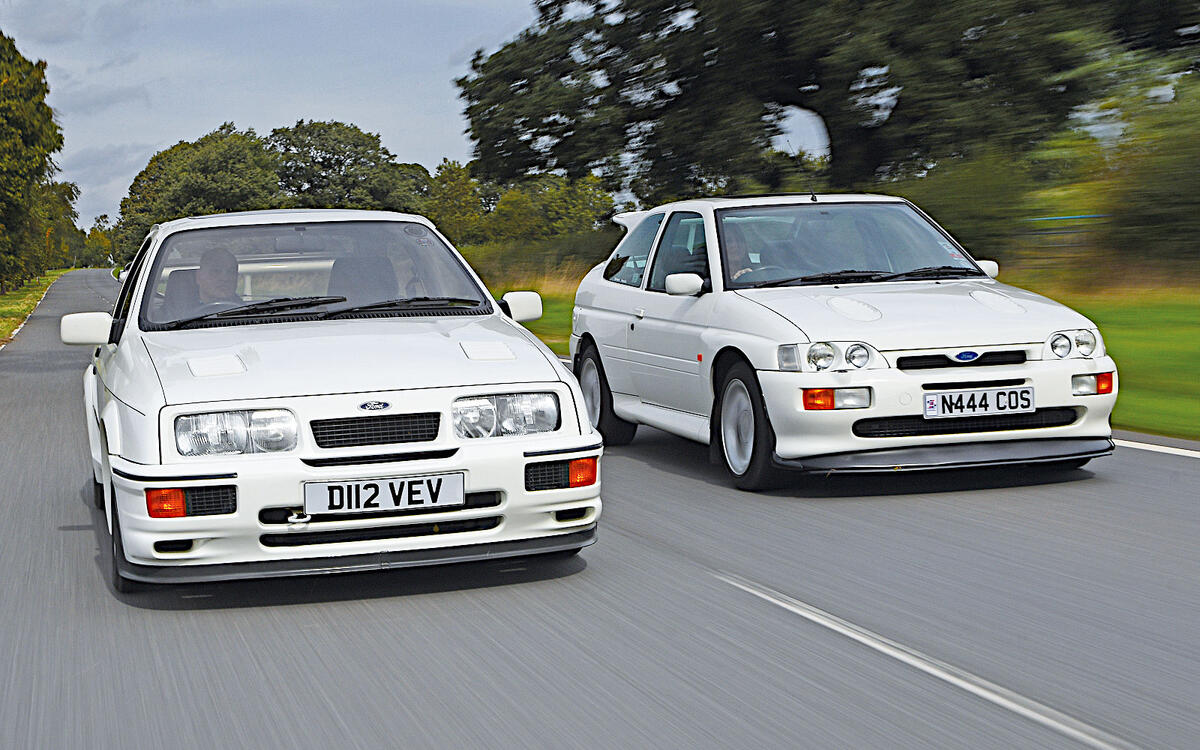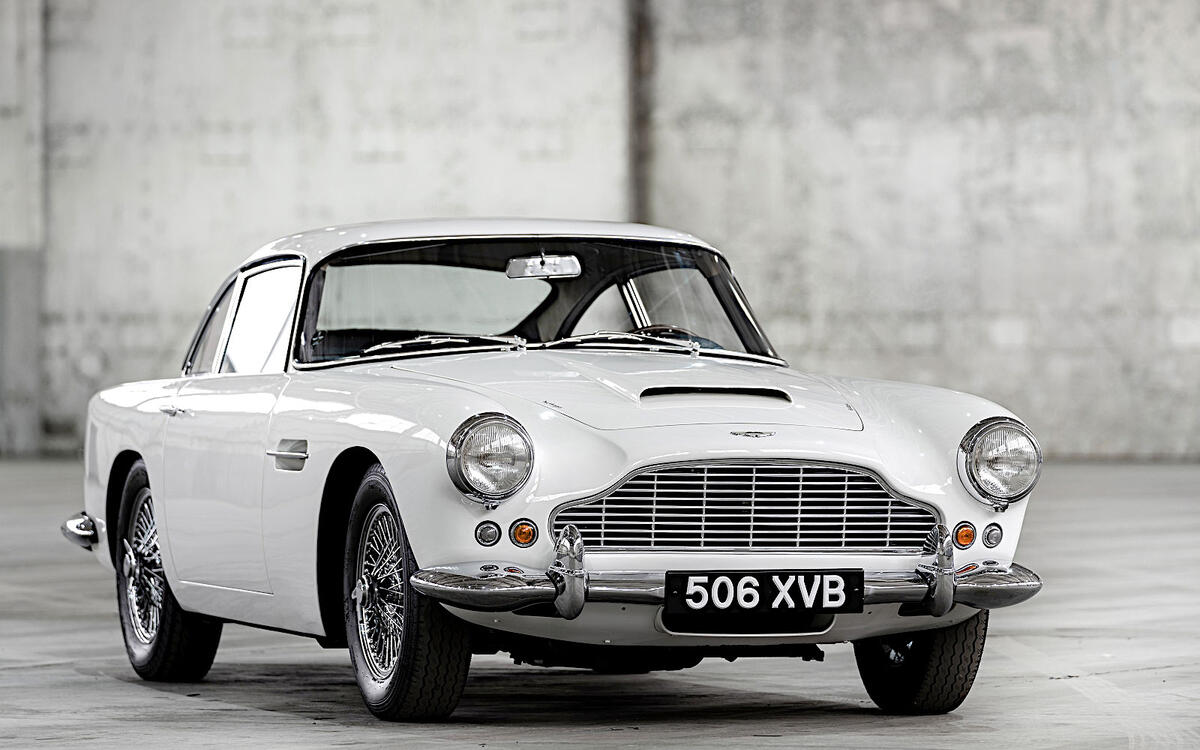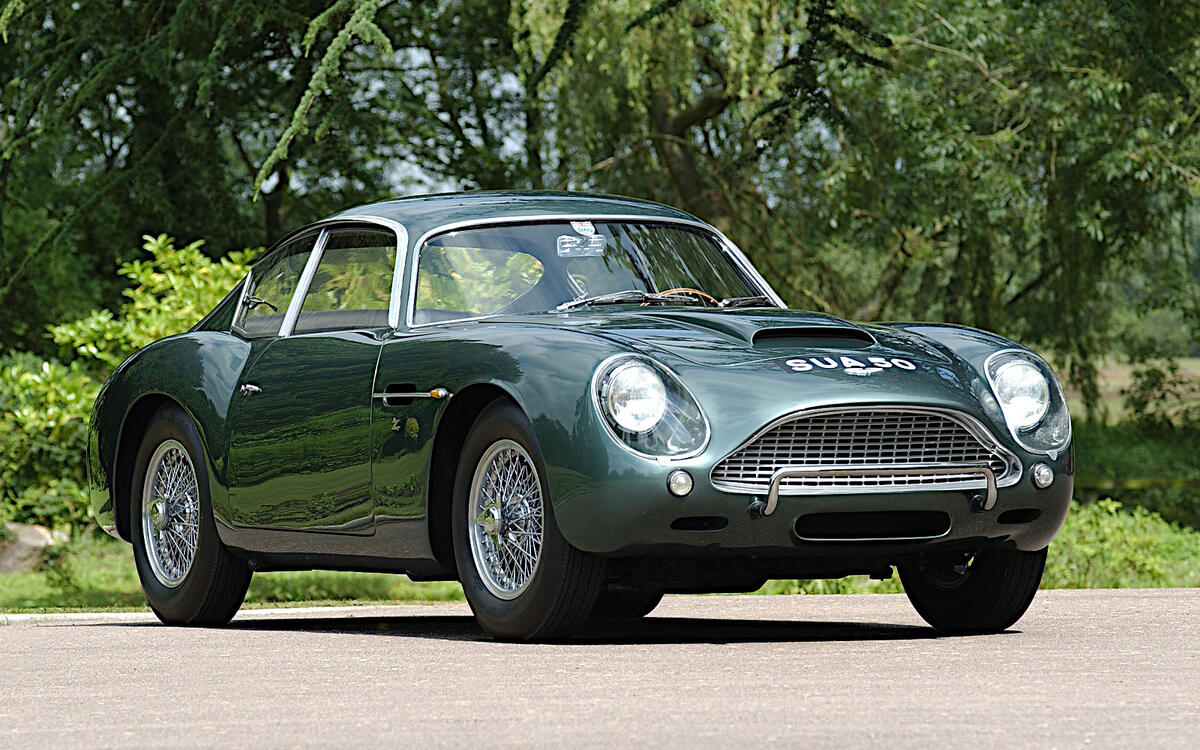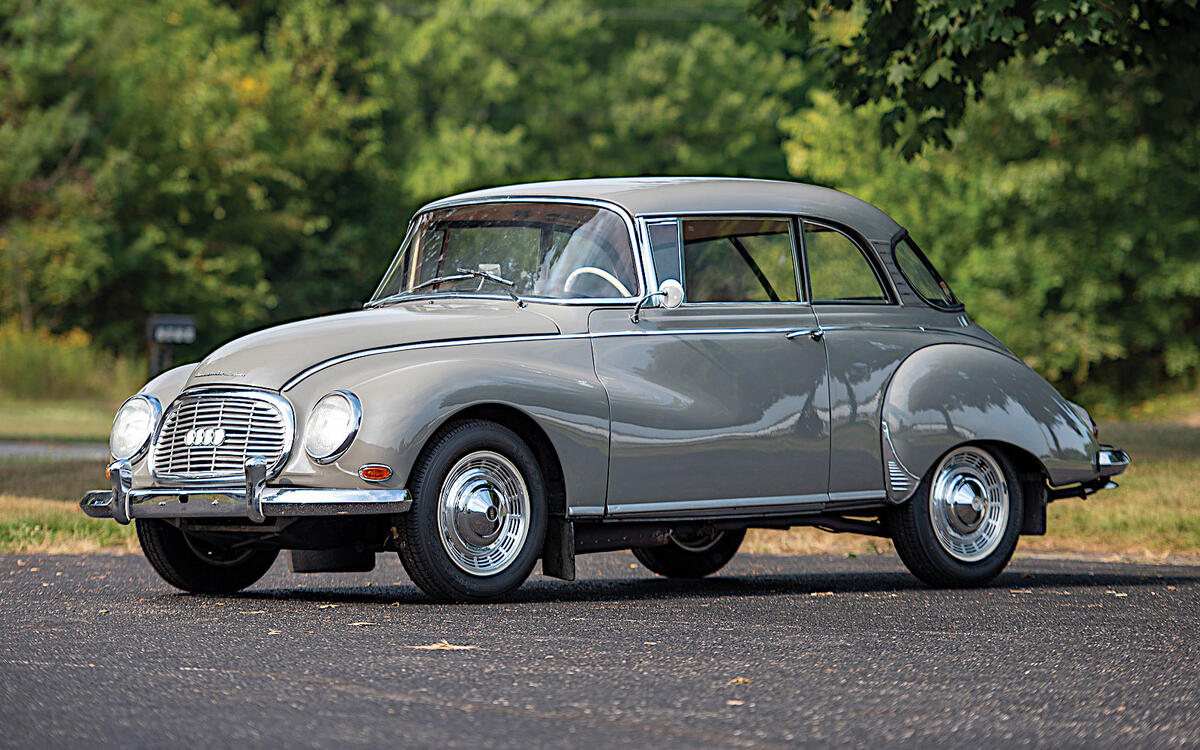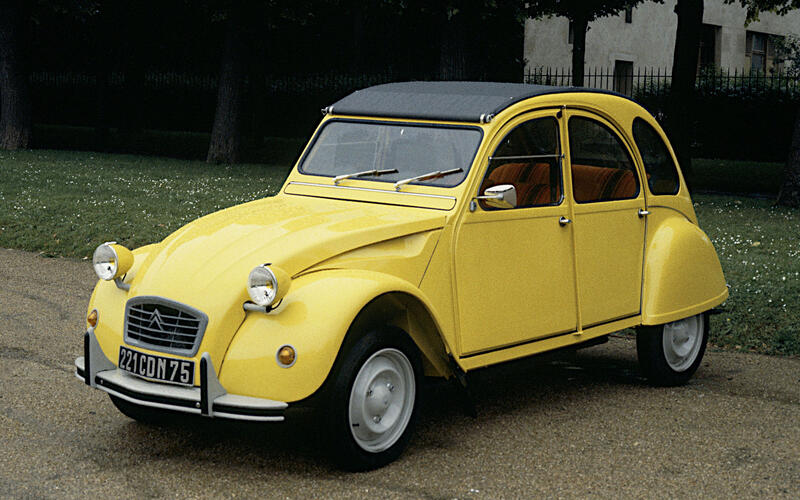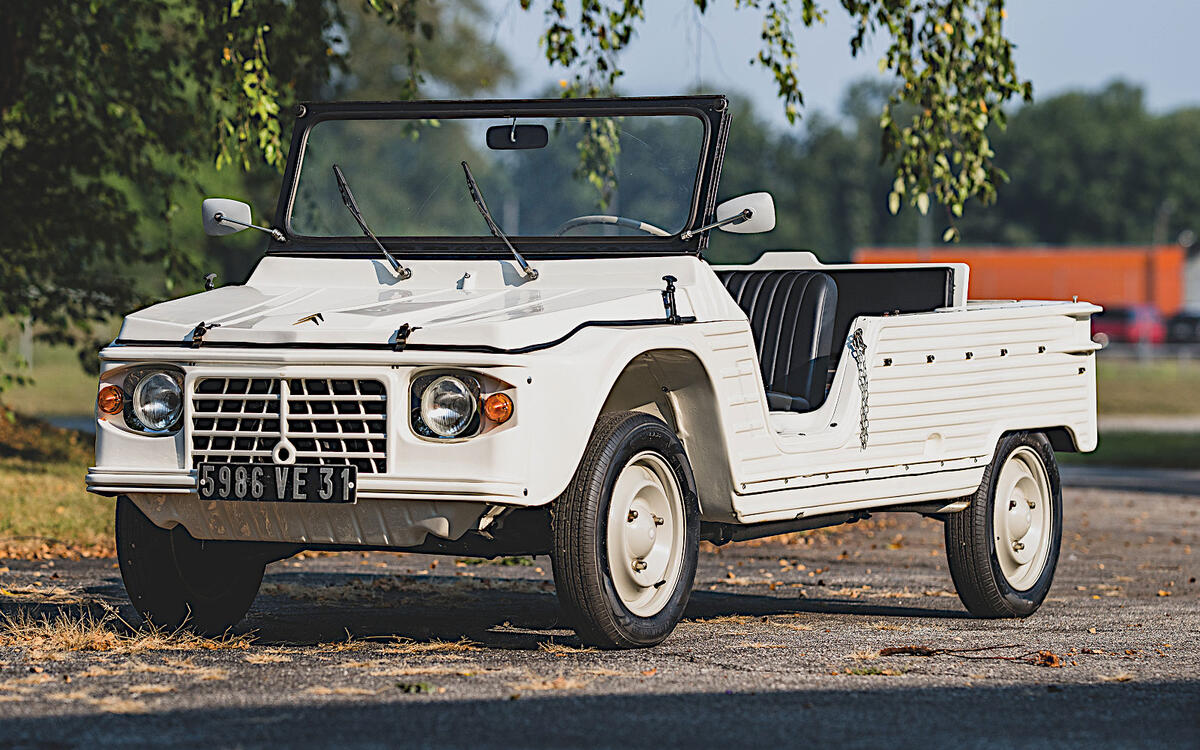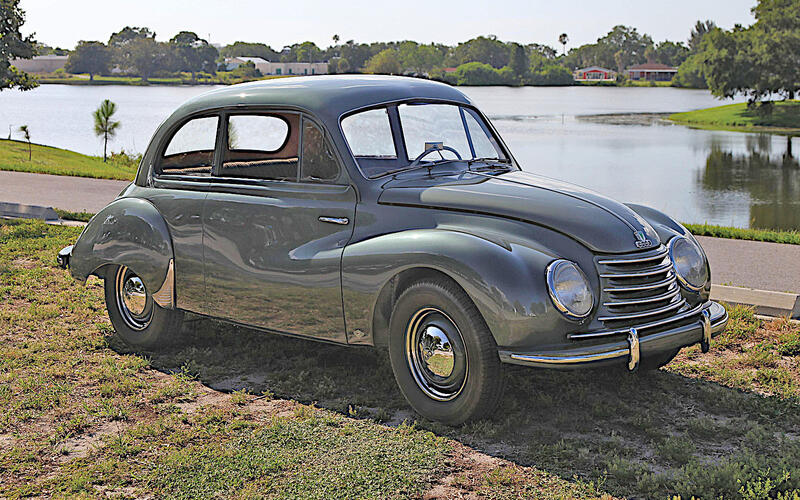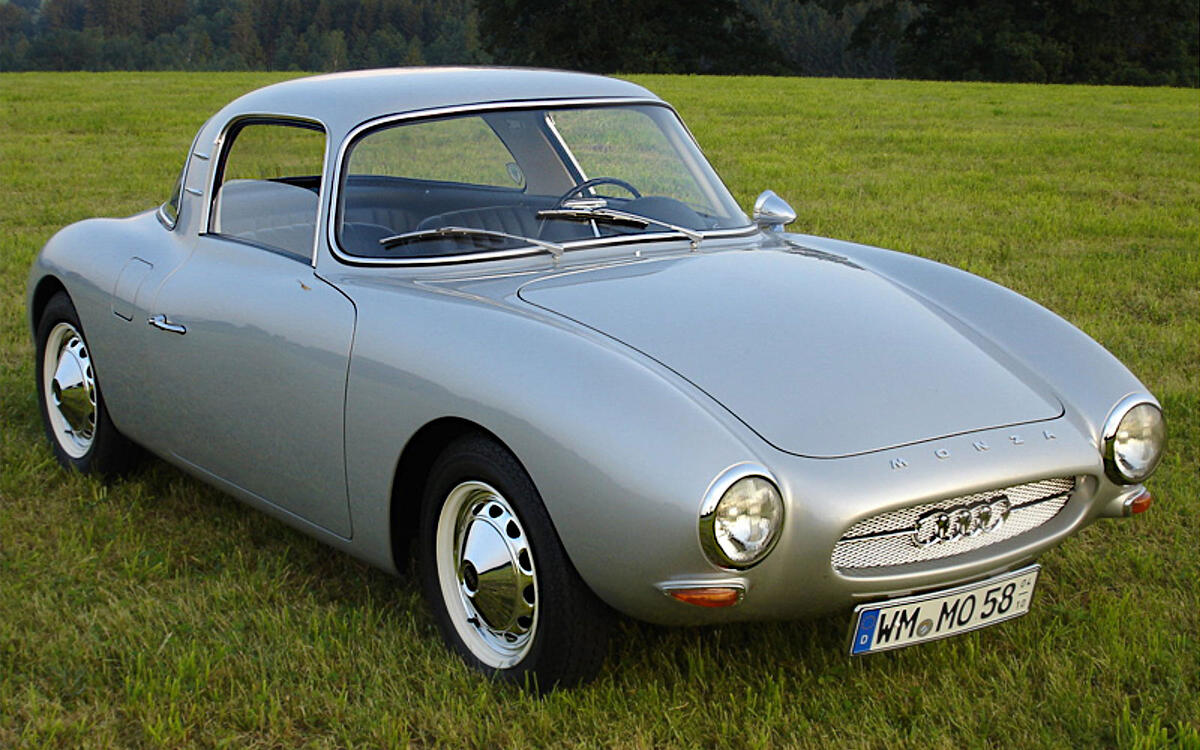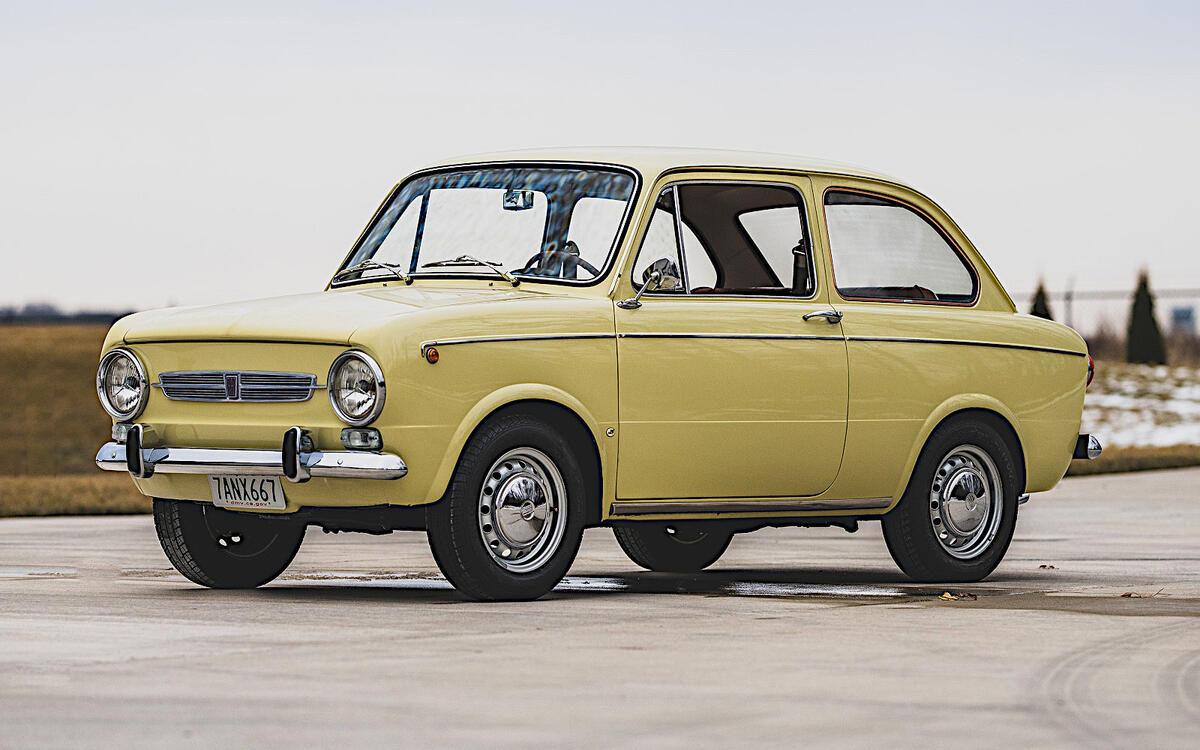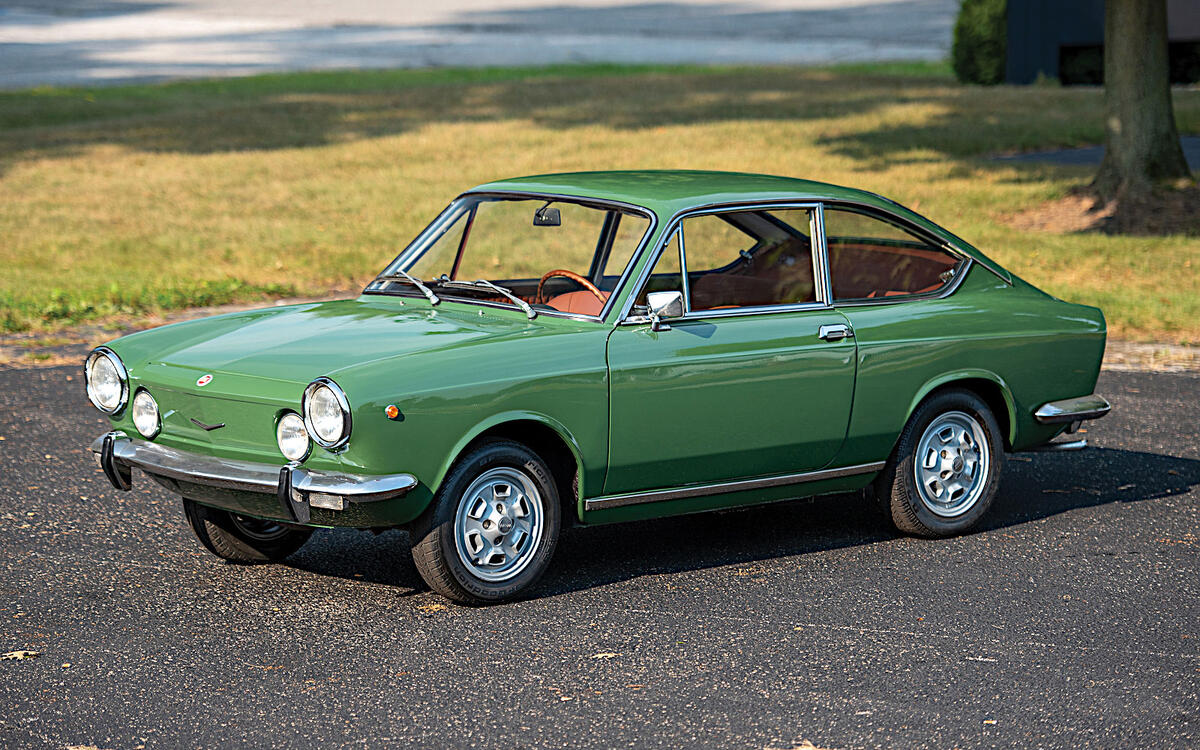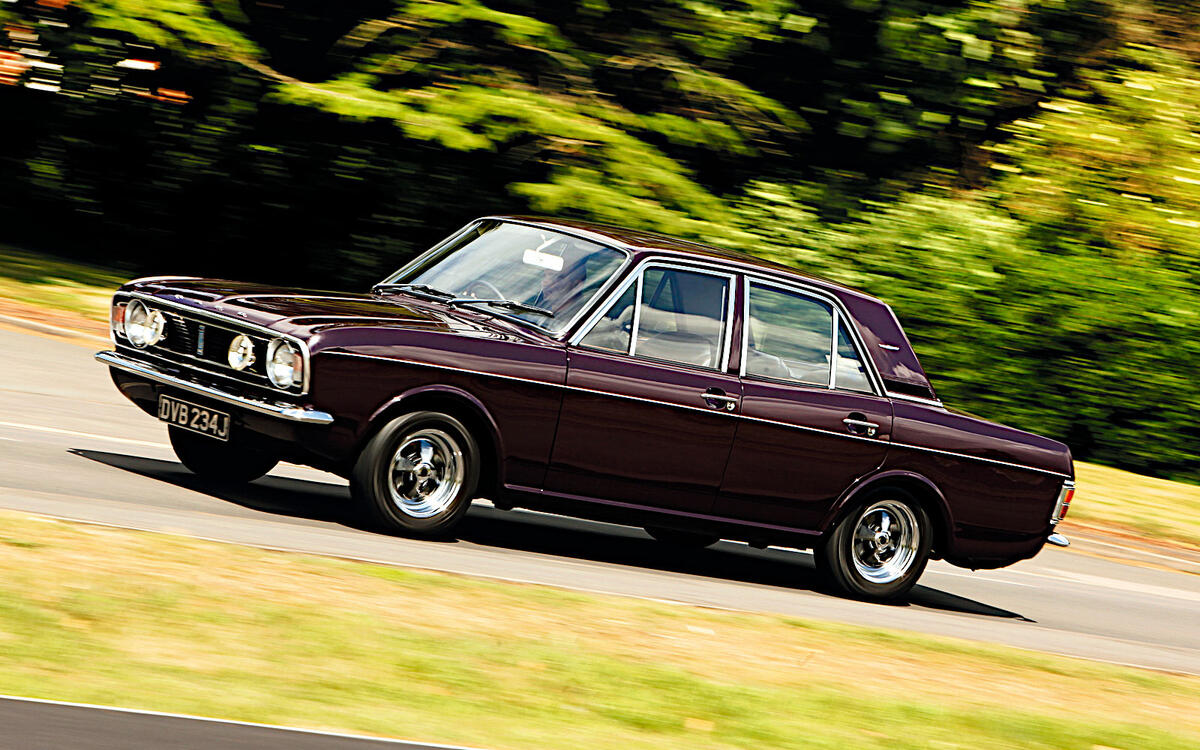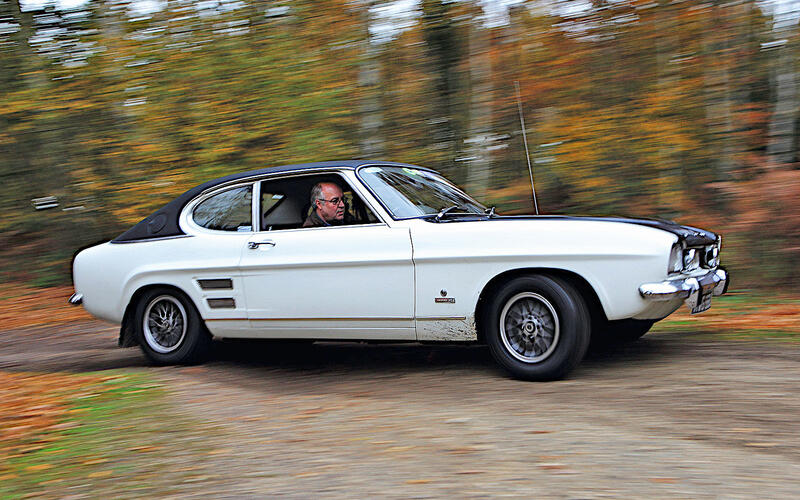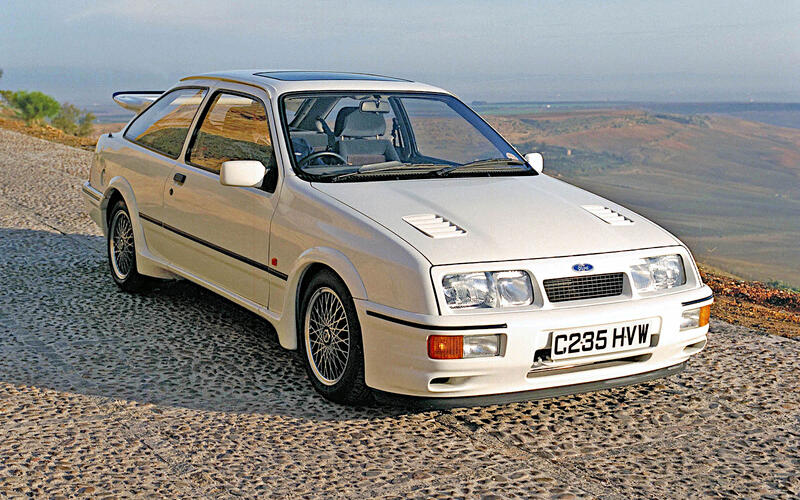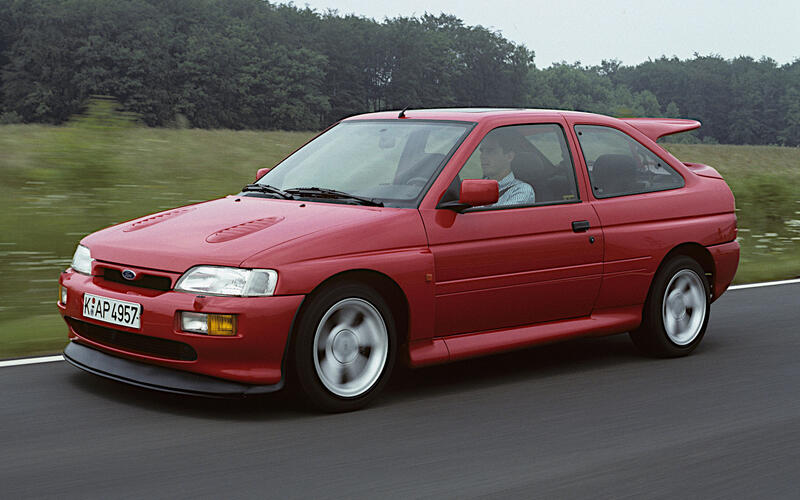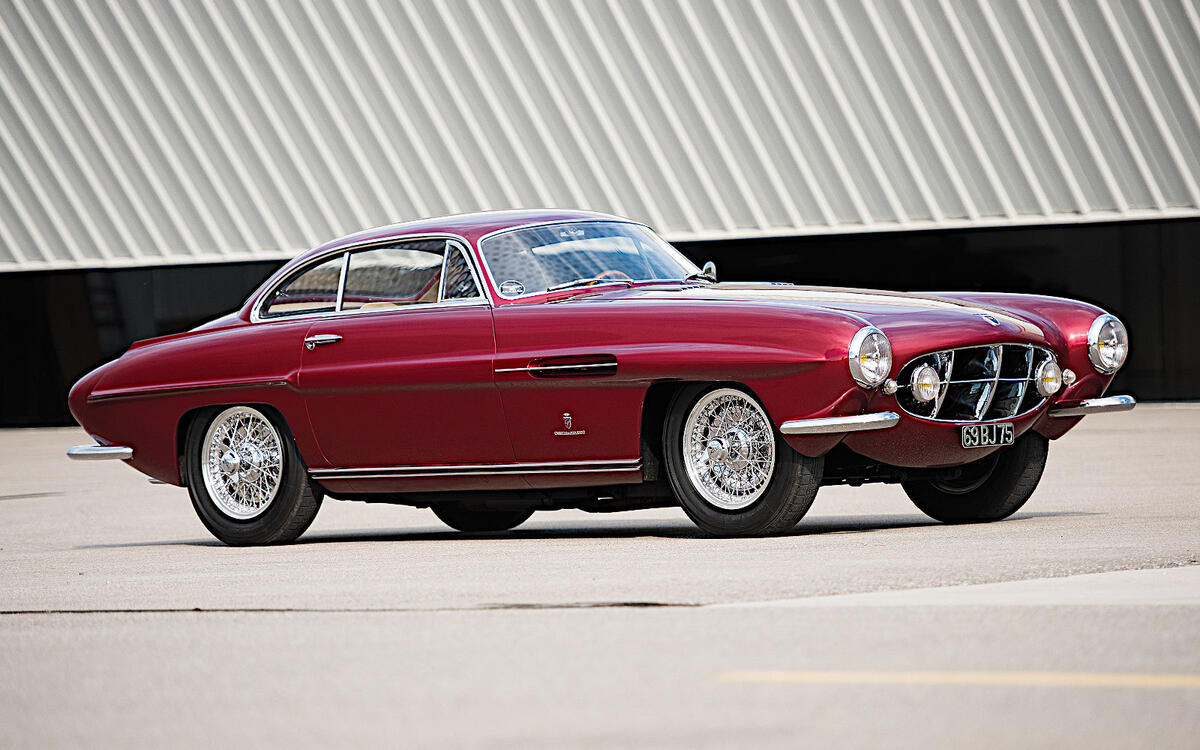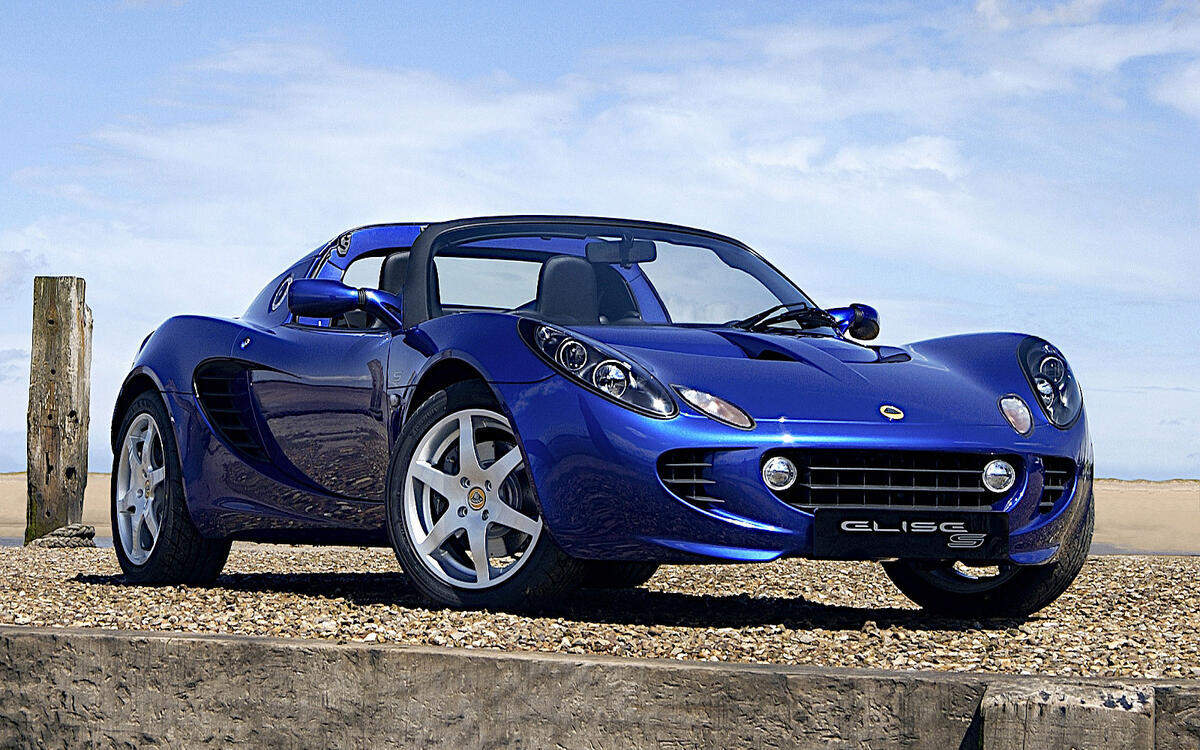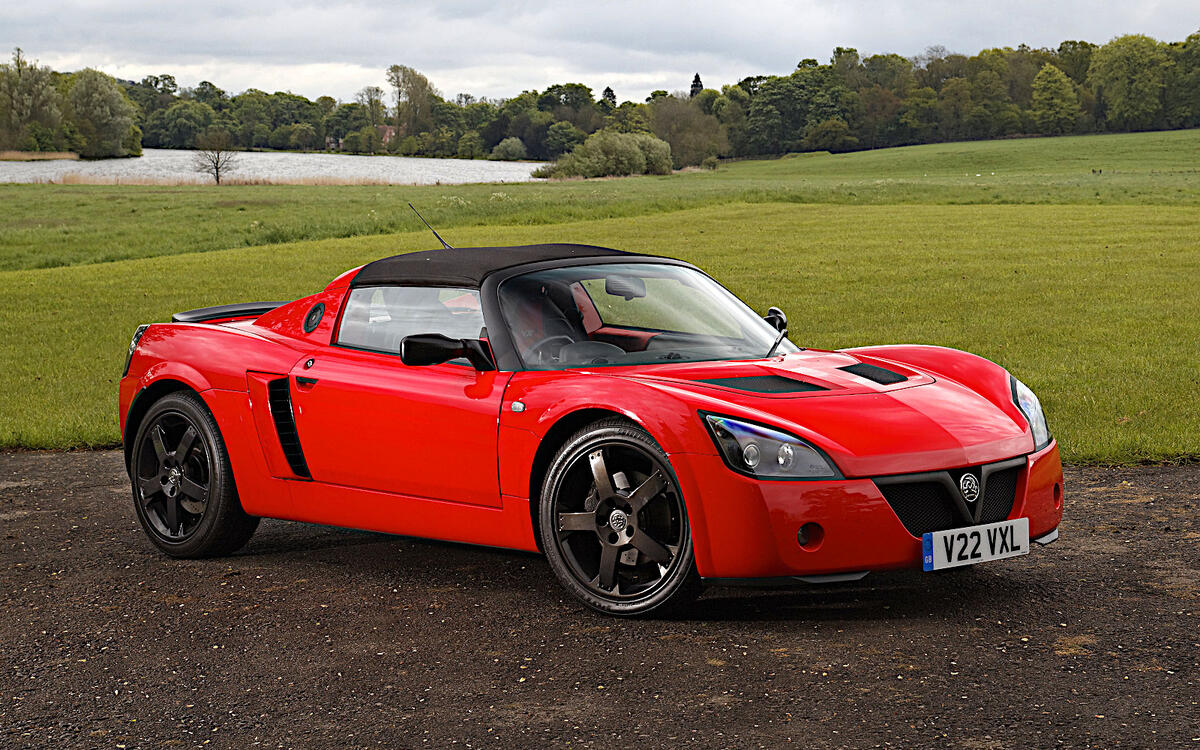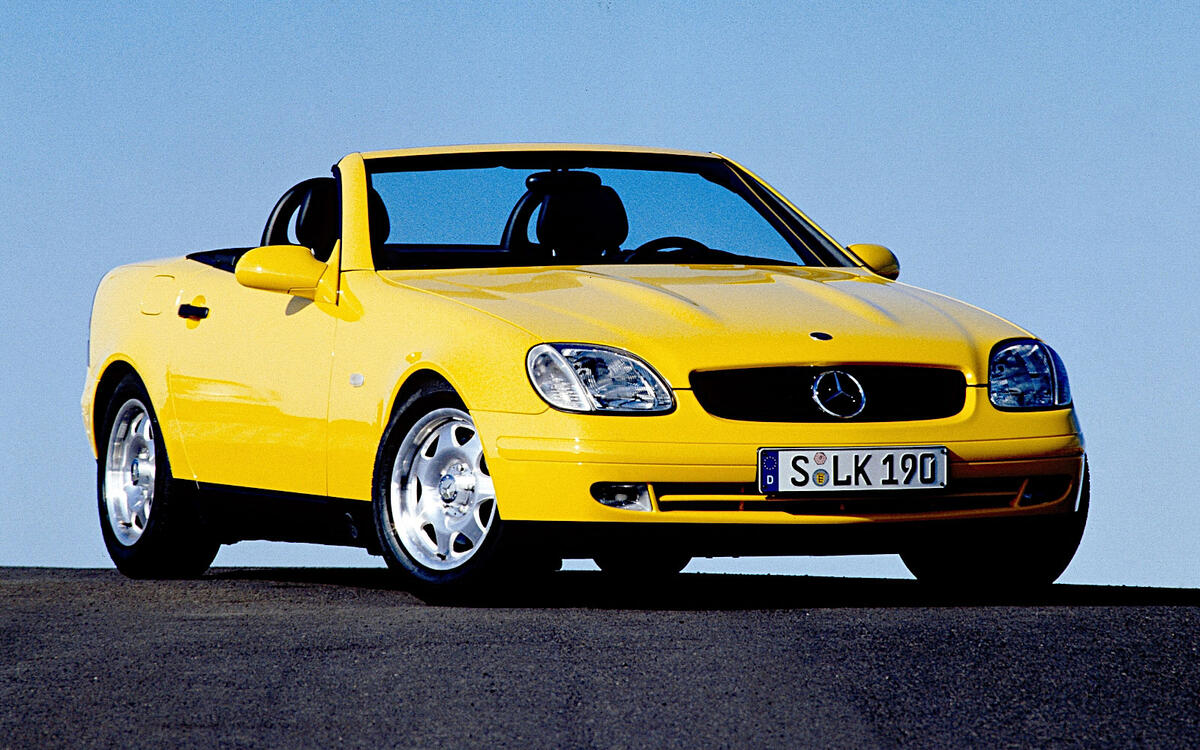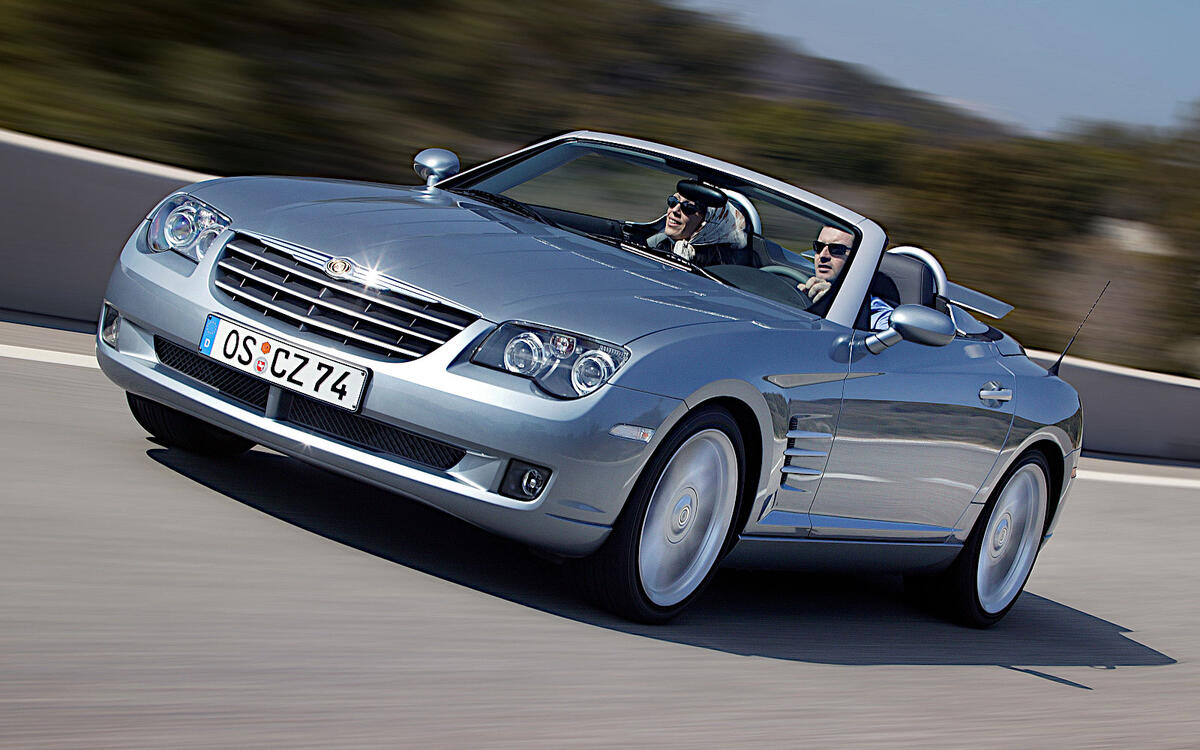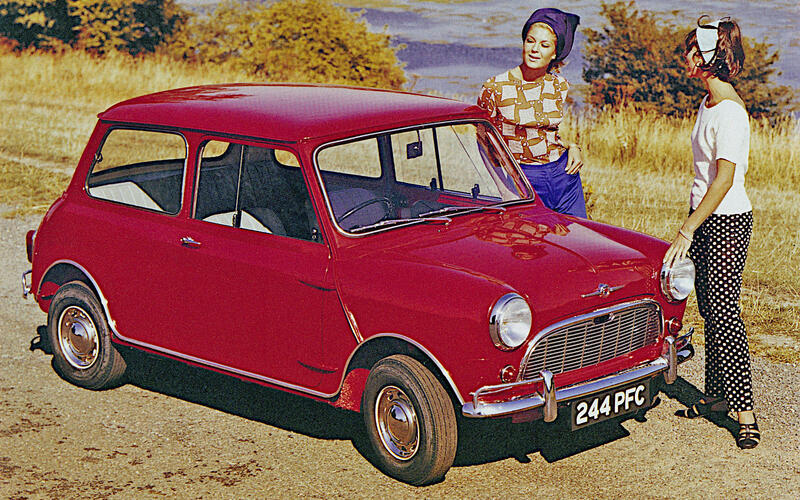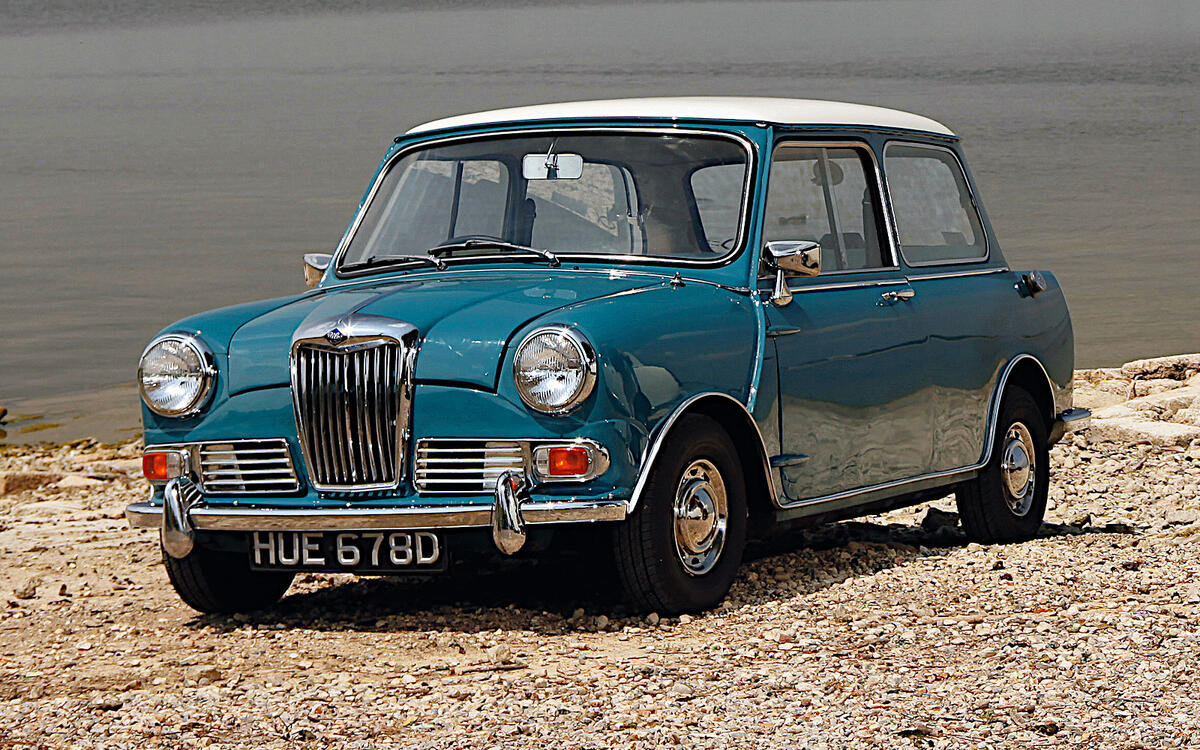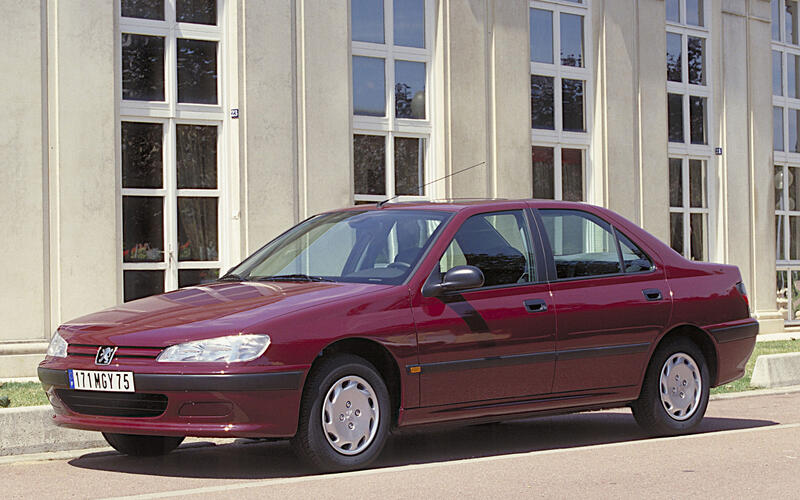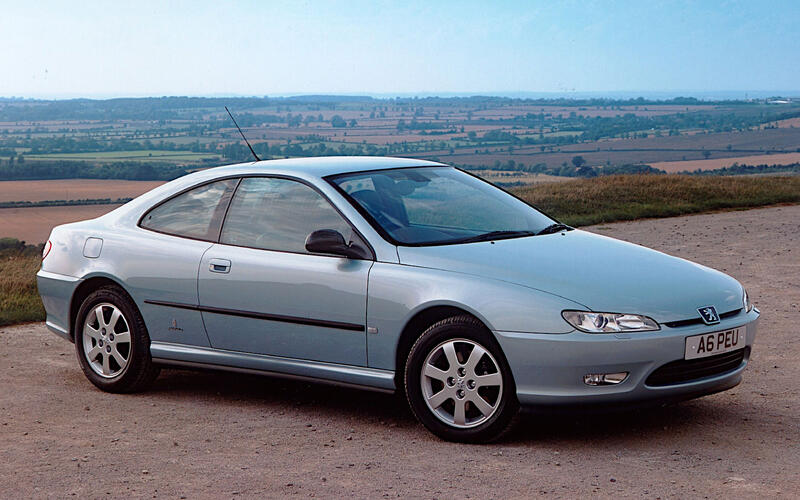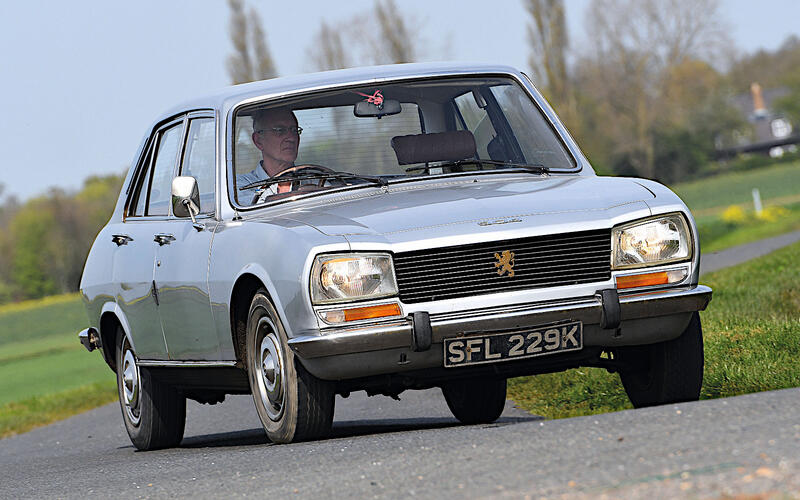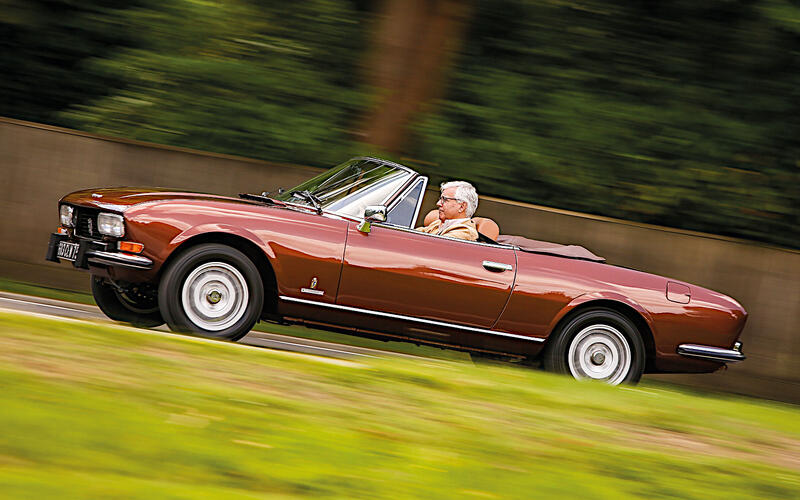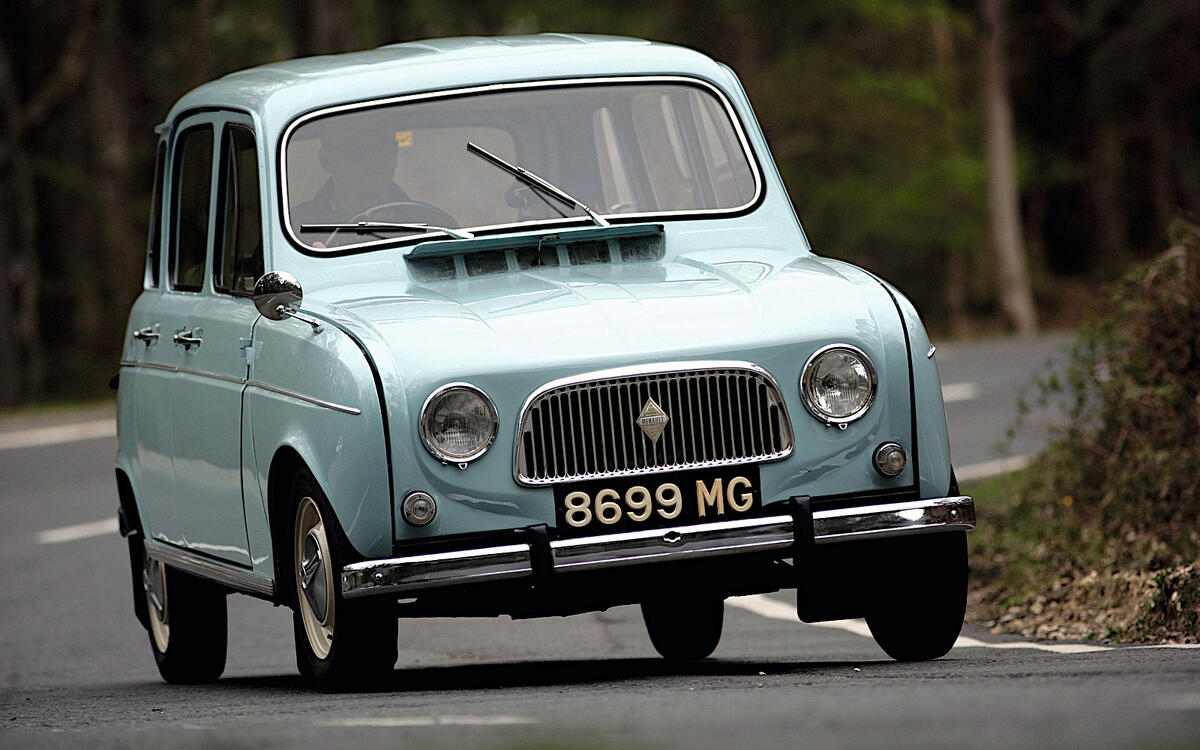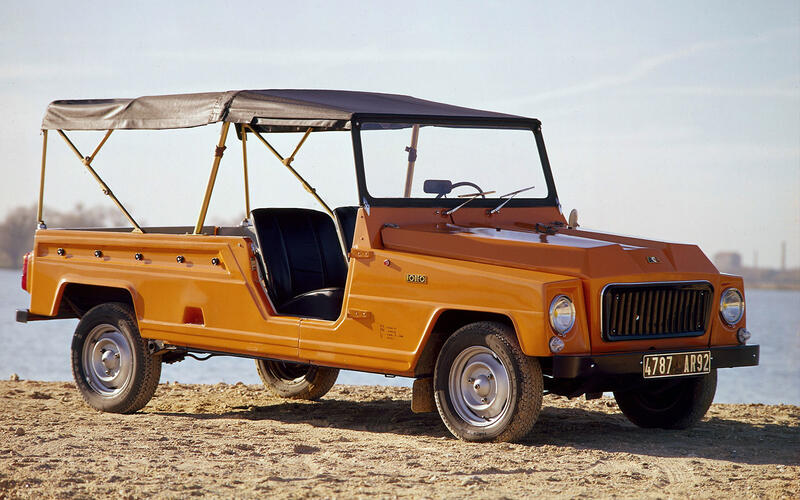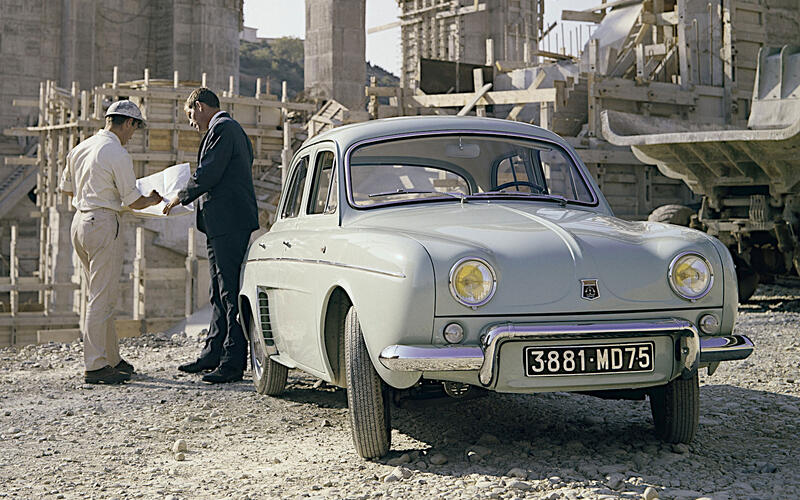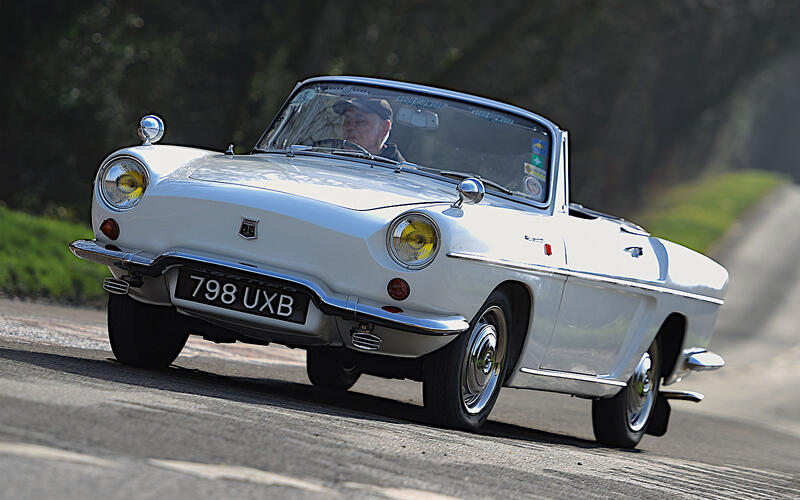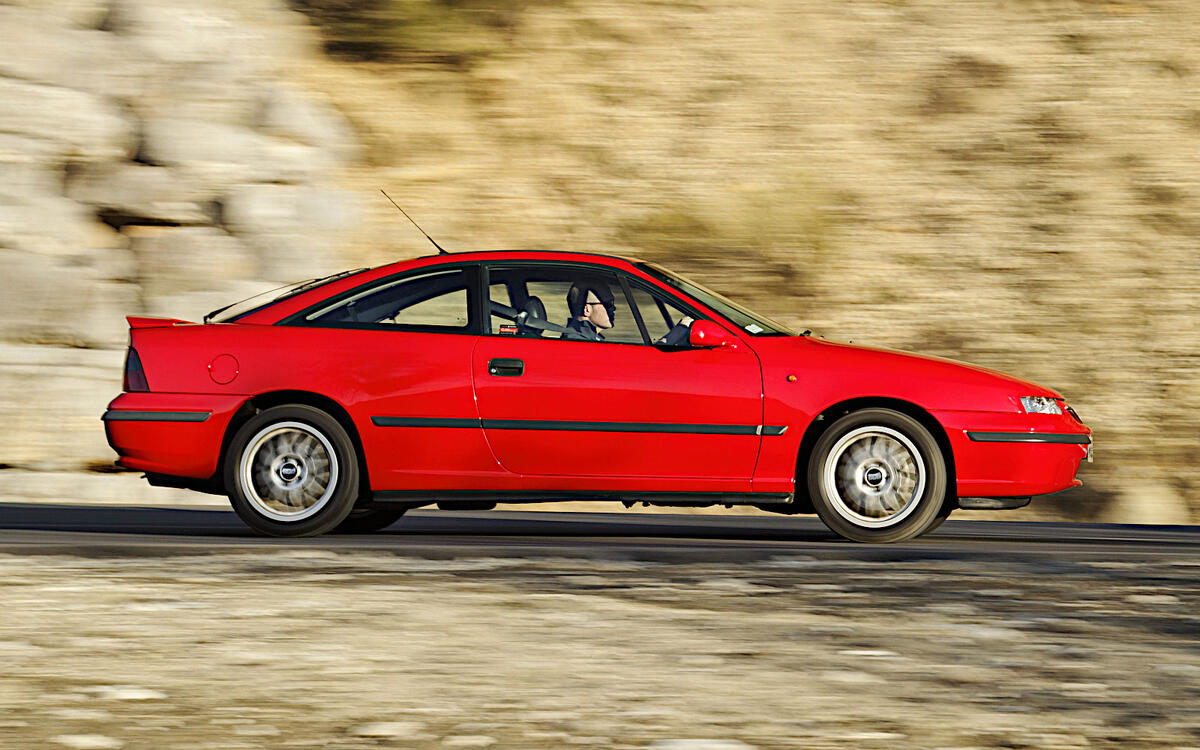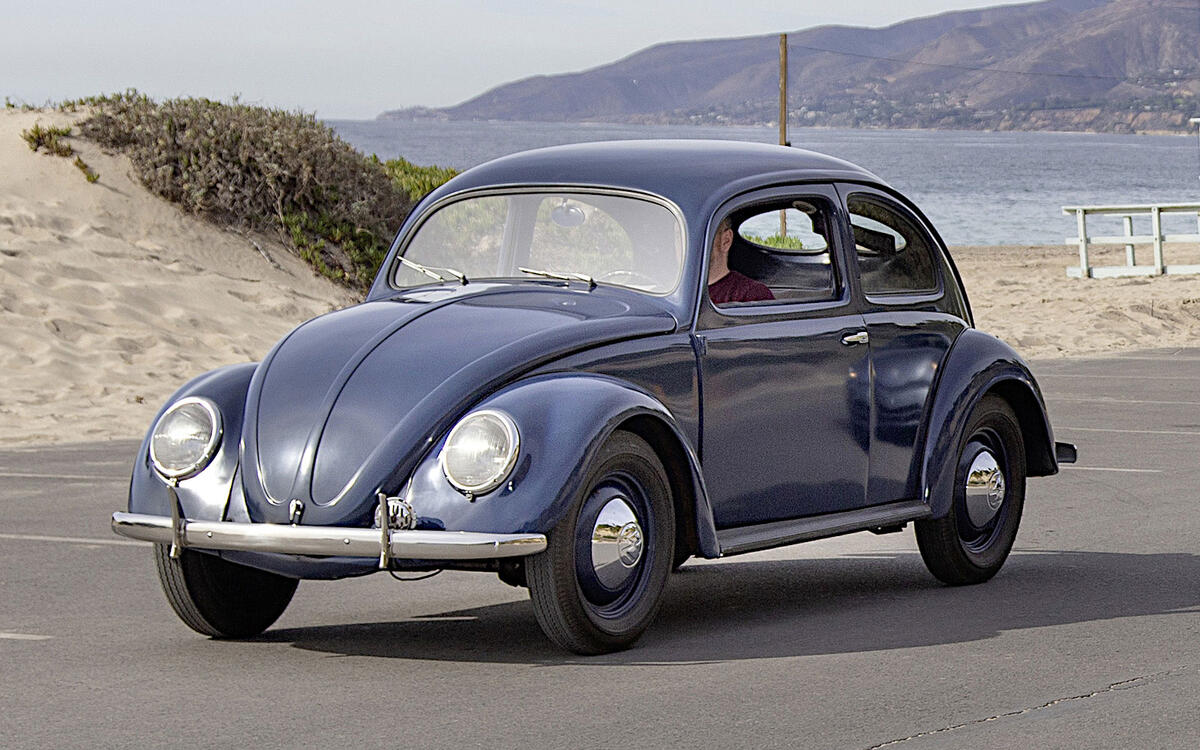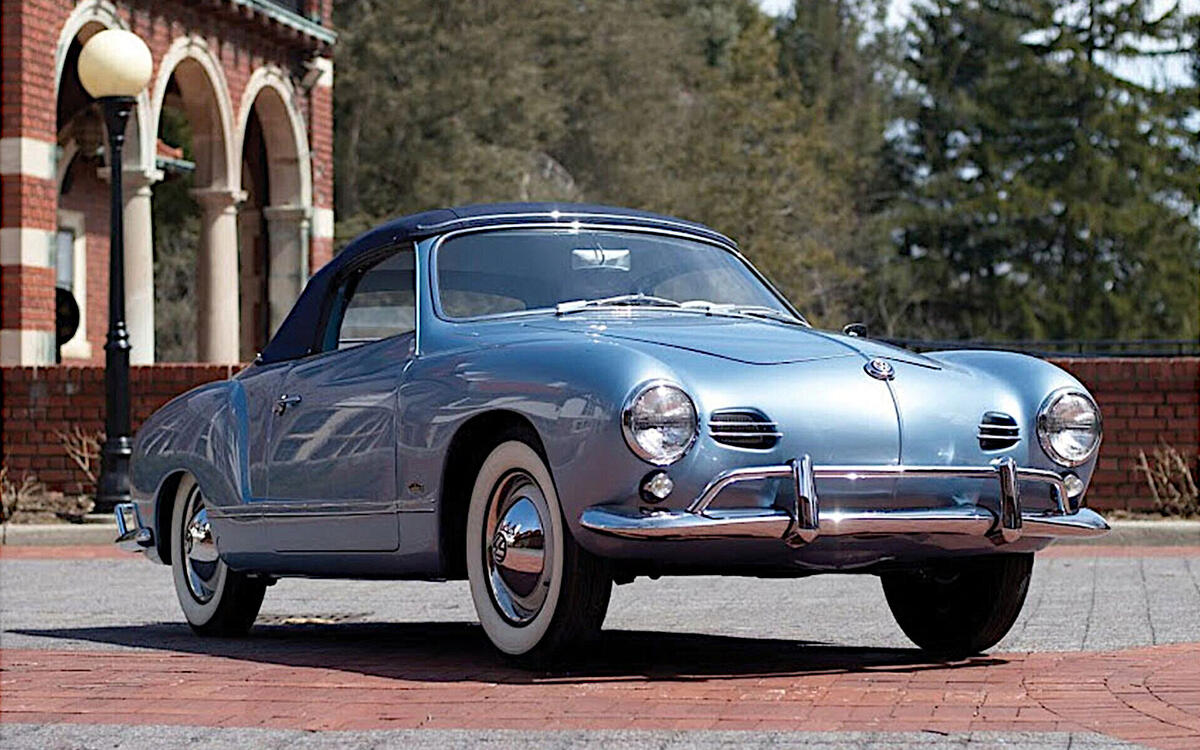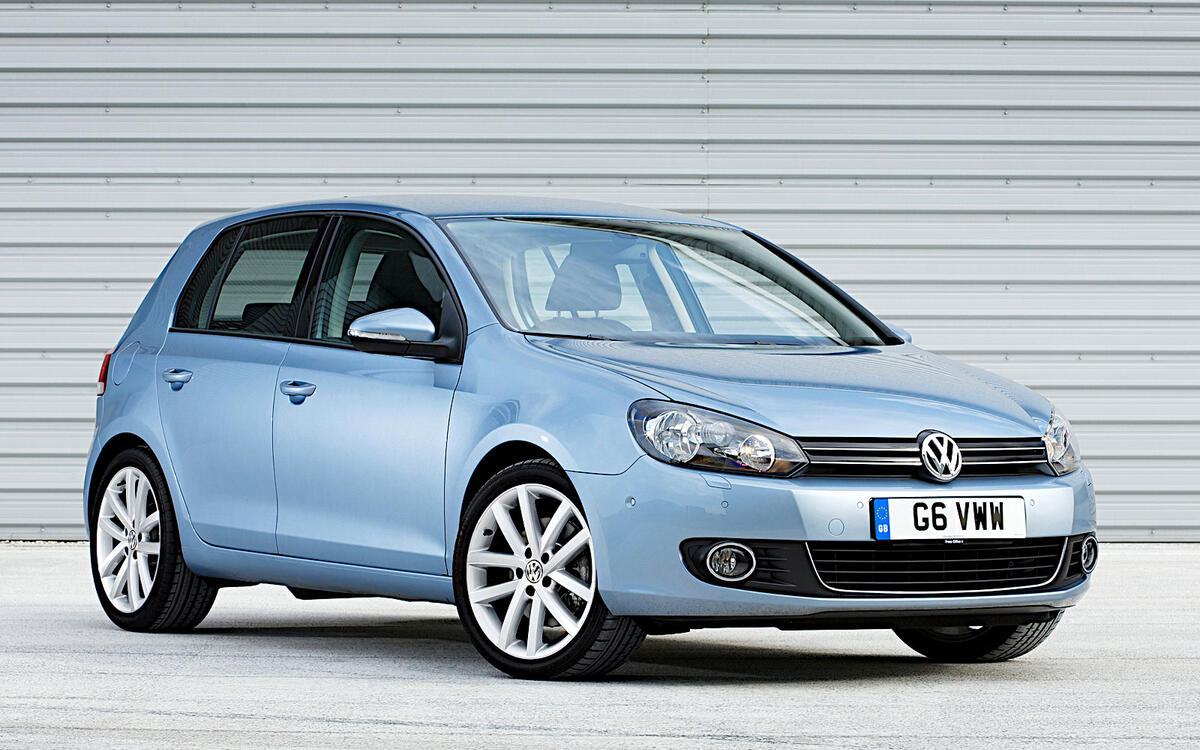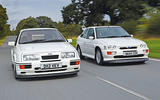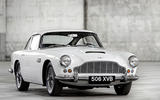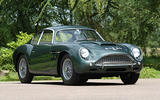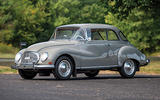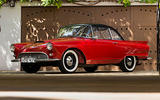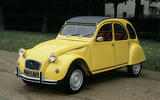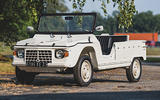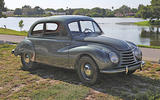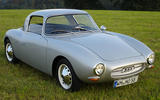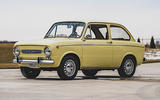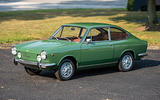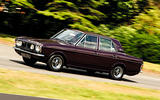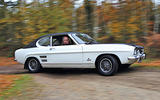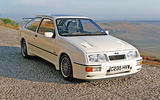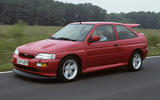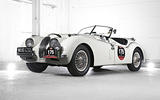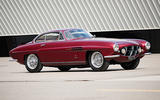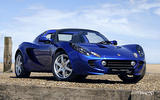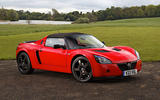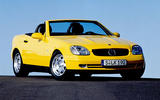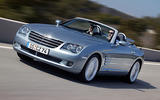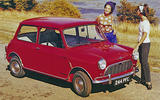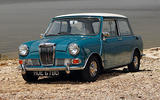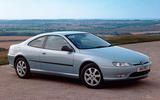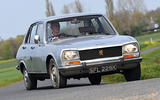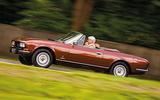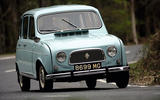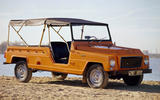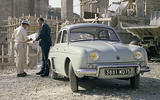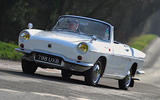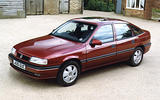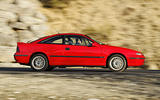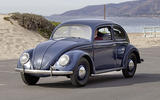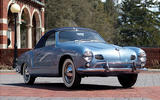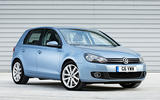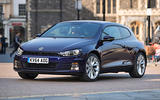 Slide of
Slide of
In these days of almost universal platform sharing, it’s quite common to find very different cars which, despite appearances, are made of largely the same stuff.
But this is not a new phenomenon. Throughout the ages, many manufacturers – and indeed coachbuilders – have transformed a model into something else entirely using largely the same bones.
To illustrate, here are 18 pairs of surprisingly related cars, listed in alphabetical order of the ones which came first.
 Slide of
Slide of
Aston Martin DB4
The DB4 coupe made its first official appearance at the London Motor Show in 1958. Its beautiful body – consisting of aluminium panels supported by a tubular frame – was designed by Carrozzeria Touring of Milan, and enclosed a new and impressively powerful 240bhp 3.7-litre straight-six engine.
For its time, the DB4 was very fast, and was said to be able to accelerate from 0-100mph and brake to a standstill in under 30 seconds. A convertible derivative appeared three years later, but by that time two other major developments had taken place.
 Slide of
Slide of
Aston Martin DB4 GT Zagato
The DB4 was transformed in two stages. First Aston itself created the DB4 GT, which was shorter, weighed 85kg less and had faired-in headlights and an uprated engine.
Only 75 were built, but that made this almost a mainstream car compared with the version created in 1960 by another Italian coachbuilder, Zagato. This featured still lighter bodywork, a more aerodynamic shape and even more obvious headlights fairing. Production stopped after just 19 had been made. This rarity contributes to them being vastly valuable today; one sold at auction in Monterey, US, for $9.52 million in August 2021.
 Slide of
Slide of
Auto Union 1000
In the 1930s, Auto Union was the umbrella term for four previously separate but now merged German manufacturers, and for a series of tremendously powerful Grand Prix cars. It was dropped after the Second World War, but returned in 1958, when it was applied to the 1000 saloon.
This was basically a rebadged DKW Sonderklasse, but that car’s 896cc three-cylinder two-stroke engine was enlarged to 981cc, a change approximately referred to in the model name.
 Slide of
Slide of
Auto Union 1000 Sp
The standard 1000 could possibly be regarded as charming, but calling it beautiful would be at least one step too far. In sharp contrast, the 1000 Sp sports version was full of visual drama, in both coupe and convertible forms.
These cars shared several styling details with, and may have been directly inspired by, the first-generation Ford Thunderbird, even though that car was only ever available as a convertible. All confusion between the 1000Sp and the T-bird would have vanished as soon as the engines were switched on, since Auto Union’s 1.0-litre two-stroke sounded very different from Ford’s big V8.
 Slide of
Slide of
Citroën 2CV
The 2CV needs no introduction to anyone, even people who know nothing about cars. Conceived in the 1930s, on sale from 1948 and still being built in the 1990s, it had a body which was bolted on to the chassis, and could therefore be easily converted into something else.
This process led to the creation of the the Dyane, the British-built Bijou, several vans and, to a large extent, the Ami. All of these were similar in concept to the 2CV, but another derivative was quite different.
 Slide of
Slide of
Citroën Mehari
Mechanically, the Mehari was identical to the 2CV, but its plastic bodywork had no roof (though a detachable one was available) or indeed much protection from the elements at all. This was fine when the weather was good, and the Mehari was a good choice for anyone who wanted a cheap and reliable beach car.
More seriously, it was also supplied to the French army. A four-wheel drive version was also available for a while, though unlike the 2CV Safari, which had an engine and gearbox at each end, the Mehari had only one of each.
 Slide of
Slide of
DKW Sonderklasse
As mentioned when we were talking about the Auto Union 1000, the Sonderklasse was a small German car fitted with a two-stroke engine – the type which made DKW so successful as a manufacturer of both cars and motorcycles.
DKW also specialised in front-wheel drive, which was still a rare, though not unique, feature when the Sonderklasse went into production in the early 1950s.
 Slide of
Slide of
DKW Monza
The Monza was an aerodynamic, plastic-bodied coupe based on the Sonderklasse running gear and chassis supplied directly (at least for a while) by DKW and assembled at different times by three German companies. In 1956, at the Italian circuit of the same name, a Monza set new world speed records for cars with engines up to 1100cc over 4000 miles, 5000 miles, 10,000 kilometres, 48 hours and 72 hours, all at around 140km/h (87mph). Until the Monza came along, all these records stood at 123km/h (76mph).
Production came to an end when DKW introduced the Auto Union 1000 Sp and decided that it made no sense to supply parts to the manufacturer of a rival car.
 Slide of
Slide of
Fiat 850
Launched in 1964, the 850 was essentially a larger and more powerful version of the 600 which had been introduced nine years earlier. The technology therefore wasn’t new, but this was nevertheless one of the more successful of the many small, rear-engined European cars available at the time.
It wasn’t as pretty as Fiat’s smallest model, the 500, but with its friendly face and the pleasing slope of its rear window it was certainly an attractive car, if not a beautiful one.
 Slide of
Slide of
Fiat 850 Coupe
As it turned out, beauty would become part of the 850 range very soon. A year after the standard car was introduced, Fiat brought out both a Coupe and a convertible version called the Spider.
Both were very good-looking, but while the Spider (which slightly resembled the Alfa Romeo of the same name) was perhaps a little bug-eyed, the Coupe was an absolute delight from bumper to bumper. One reviewer called it “one of the handsomest, best-balanced designs ever seen on a small car”, and it’s difficult to argue with that.
 Slide of
Slide of
Ford Cortina
Ford built Cortinas across four (or, depending on how you’re counting, five) generations from 1962 to 1982. For reasons which will shortly become apparent, the one we’re interested in here is the Mk2, which slightly resembled the contemporary US-market Falcon.
According to the Society of Motor Manufacturers and Traders, this was the most-registered car in the UK in 1967. It was available as a two- or four-door saloon or a five-door estate, and although the 1.6-litre Lotus Twin Cam engine was available there was no specific sports model in the range.
 Slide of
Slide of
Ford Capri
During the lifetime of the Mk2 Cortina, Ford introduced the Capri, which it advertised as ‘the car you always promised yourself’. Despite looking very different, this was really just a coupe version of the Cortina – or, as it was rather harshly described, ‘a Cortina in drag’.
Although the two models were very closely related, the Capri had a much wider range of engines, from a 1.3-litre version of the long-running Kent to the Essex V6 which, for motorsport homologation purposes, was briefly available in 3.1-litre form.
 Slide of
Slide of
Ford Sierra Cosworth
The regular Sierra made its debut in 1982, at a time when the cancellation of the Mk2 Escort meant that Ford of Europe did not have a car capable of winning international motorsport events. This led to the development of the RS Cosworth, which had a turbocharged version of the old Pinto engine with a 16-valve cylinder head, and was festooned with aerodynamic aids.
Even with the later introduction of four-wheel drive, the Sierra proved to be too large and heavy for rallying, though it did win a round of the World Championship in 1988. Things were very different on the circuits, where the Cosworth dominated Touring Car racing for several years.
 Slide of
Slide of
Ford Escort Cosworth
The oddest example of car transformation must be when a manufacturer makes one car look like another which is already in production. That’s exactly what happened in the case of the Escort Cosworth, which despite its appearance was in all important respects the last development of the Sierra Cosworth.
The reason for this was simple. The Sierra went out of production in 1993, so there was almost no marketing value in continuing to use it for rallying. The fifth-generation Escort, though, was less than halfway through its production life. Converting this transverse-engined, front-wheel drive car into a 4x4 with an inline engine would have cost a fortune, so Ford reworked the Sierra to make it look like the model it was trying to promote. It certainly helped the image of the Escort Mk5, which had been widely panned by the press at launch.
 Slide of
Slide of
Jaguar XK120
Jaguar’s first post-War sports car was greeted with astonishment when it was displayed at the 1948 London Motor Show. It proved to be as fast as it looked, and went on to achieve great success in races, rallies and record attempts. It was also the basis for the Jaguar C-Type, which won the Le Mans 24 Hour race in 1951 and 1953.
Production XK120s were in both coupe and roadster form. The earliest examples had aluminium bodies, but in most cases the panels were made of steel.
 Slide of
Slide of
Jaguar XK120 Supersonic
Excitingly modern though the XK120 may have seemed in 1948, it was eclipsed only six years later by the beautifully rebodied Supersonic. This was designed not by Jaguar but by Giovanni Savonuzzi (1911-1988), a director of Ghia, which built three examples.
The Supersonic body had already been used for Ghia’s interpretation of the Fiat 8V sports car, and would be used again, after some modification, for the Aston Martin DB2/4 of 1956.
 Slide of
Slide of
Lotus Elise
In spirit if nothing else, the original Elise was a successor to the Lotus Seven, with an emphasis on light weight and excellent handling rather than straightline performance. It was launched in 1996 but was never going to last long, since it didn’t meet upcoming safety regulations.
Developing a new version would be very expensive, but fortunately General Motors (a previous owner of Lotus) stepped in and agreed to share the cost. This made possible not only the Series 2 Elise but a new car of a type which GM Europe had never built before.
 Slide of
Slide of
Vauxhall VX220
Part of the deal with GM was that Lotus would build another car alongside the second Elise at its factory in Norfolk. Known as the Vauxhall VX220 in the UK and the Opel Speedster elsewhere in Europe, it was mostly the same as the Elise, but it had a different body (incorporating Vauxhall/Opel design details) and an engine normally found in cars such as the Astra and Cavalier rather than the one supplied to Lotus by Toyota.
Both models went on sale in 2000. Three years later, the VX220/Speedster received a turbocharged engine which raised the power output substantially from 147bhp to 220bhp.
 Slide of
Slide of
Mercedes-Benz SLK
The SLK two-seat roadster was produced in three generations for two decades before being renamed in 2016. In its original form, codenamed R170, it was powered by several engines, from a straightforward 2.0-litre to a supercharged 3.2-litre V6, which gave the AMG version an output of nearly 350bhp.
After a facelift in 2000, it continued for another four years before making way for the R171 generation – but the R170 story was not yet over.
 Slide of
Slide of
Chrysler Crossfire
During the production run of the first SLK, Mercedes and Chrysler were merged into the ill-fated entity DaimlerChrysler. They were later unmerged, but not before the SLK was transferred from one division to another. The end of its career as a Mercedes was immediately followed by a new one as the Chrysler Crossfire.
Chrysler produced a completely new body, unrecognisable from the original and with design cues from the iconic Art-Deco Chrysler Building in New York City. Available as a coupe as well as a roadster, almost all the engineering was carried over from the SLK, and the Crossfire was built in Germany - by Karmann - despite its American badge. Sales started well but soon faded badly, and the Crossfire was dropped in 2007 – the same year its parents divorced.
 Slide of
Slide of
Mini
The car generally referred to as the Mini (but sold under several names) arrived in 1959 and very quickly became famous for three quite different reasons: all at the same time it was a cheap and practical little car, a formidable competitor in motorsport and a popular choice among the celebrities of the 1960s.
It was produced mostly as a two-box saloon, but also as an estate and a pickup. In addition, it was offered in two other forms which were about as different as they possibly could be from the regular version while still using the same basic structure.
 Slide of
Slide of
Riley Elf and Wolseley Hornet
Both named after previous models, these Mini derivatives were most notable for their extended luggage compartments, which made the only ones whose shapes could be described as three-box. Even if you were standing directly in front of them, it was clear that they were no ordinary Minis, since they both had elaborate radiator grilles. Wood-veneer dashboards and extra equipment distinguished them on the inside too.
Both were produced from 1961 to 1969. The Elf, along with the Kestrel (a version of the Austin 1100), was one of the last Rileys ever built, while the Wolseley name survived for only six more years. Fun fact: the Riley brand was retained by BMW in 2000 when it sold Rover and most of its other brand names.
 Slide of
Slide of
Peugeot 406
As its name suggests, the 406 came after the 405 and the 407 in Peugeot’s line of medium-sized family cars. It was produced from 1995 to 2004, and came with a wide choice of petrol and diesel engines ranging in size from 1.6 to 2.9 litres.
Most 406s were either saloons or estates, but in 1996 Peugeot revealed a derivative which it had created with the help of one of Italy’s most famous design houses.
 Slide of
Slide of
Peugeot 406 Coupe
Other 406s were attractive enough, but the Coupe was, by general agreement, a beautiful car. It was designed by Pininfarina, which also built it, a service it provided for the Peugeot 306 Cabriolet during the same period, along with cars for other manufacturers.
According to its own figures, Pininfarina created 107,633 406 Coupes from 1996 to 2004, reaching a peak of 24,261 in 1998. In that year, the following one and 2001, the company built more of these cars than anything else.
 Slide of
Slide of
Peugeot 504
The 406 story is very similar to that of the earlier 504, though in this case the design of the original car was also done by Pininfarina. The styling of the original saloon was pleasant but not particularly remarkable, which would not have been necessary for a mainstream model.
It was far more important that the 504 was named Car of the Year for 1969. It went on to have a long production life, and became particularly popular in Africa, where it was praised for its toughness and actually won five rounds of the World Rally Championship in the mid to late 1970s.
 Slide of
Slide of
Peugeot 504 Coupe and Cabriolet
Peugeot commissioned Pininfarina to design and build the Coupe and Cabriolet versions of the 504, and this time, with styling much higher on the priority list, the Italians really let rip. Both cars were genuinely beautiful, and though the Coupe was manufactured in far greater numbers the Cabriolet was the better-looking of the two to some eyes.
Production faded away in the early 1980s, but a decade before that Pininfarina was building over 4000 Coupes and around 1000 Cabriolets per year. The total figure from 1970 to 1983 was 32,648, of which Coupes accounted for about three quarters.
 Slide of
Slide of
Renault 4
Renault was in the midst of a financial crisis when it launched its first front-wheel drive passenger car in 1961. The 4 arrived just in time – it was a huge success, and in order to meet demand Renault had to build the first million examples in just four and a half years.
Citroën grumbled that the 4 was a copy of its 2CV, and received a robust response. There’s little doubt, though, that another Citroën strongly influenced another model based on the 4…
 Slide of
Slide of
Renault Rodeo
The Citroën Mehari entered the market in 1968, and it’s almost certainly no coincidence that Renault had a competing car in the showrooms two years later. The plastic-bodied Rodeo was actually designed and built by a French company called ACL (later renamed Teilhol), but it used the platform and running gear of the Renault 4.
The biggest difference between the Rodeo and the Mehari was that the former had much larger engines. Citroën stuck with its 602cc flat-twin throughout the production life of the Mehari, but the four-cylinder Rodeo started out at 845cc and quickly broke through the 1.0-litre barrier.
 Slide of
Slide of
Renault Dauphine
The Dauphine was the successor to Renault’s first post-War model, the 4CV, though the latter remained in production for a few years after the former was launched. Both were rear-engined, but the Dauphine was far more modern and more suitable for export. Production soon exceeded 1000 units per day.
Depending on how you look at these things, there’s a strong case for saying that the Dauphine was the cutest car Renault ever produced. Two years after its launch in 1956, it was transformed into arguably the most beautiful.
 Slide of
Slide of
Renault Caravelle
Although the Dauphine had been mostly designed in-house, some of its details were the work of Ghia. When Renault decided to produce a sports car derivative, it commissioned the Italian company to do the whole job.
The Caravelle, also known as the Floride in some markets, was mechanically identical to the Dauphine at first (though a new engine was introduced in 1962), but visually there was no comparison. Ghia had performed a superb transformation, creating a truly delightful little car. Unfortunately, its looks had dated by the mid 1960s, and production was brought to a quiet halt in 1968.
 Slide of
Slide of
Vauxhall Cavalier
The third and final generation of the Cavalier was the UK equivalent of the first-generation Opel Vectra, and was sold from 1988 to 1995. There was no estate version, but customers could choose between a saloon and a hatchback. Powertrains ranged from a 1.4-litre engine and front-wheel drive to a turbocharged 2.0-litre 4x4.
This was the most aerodynamic of all Cavaliers, but GM Europe devised an even more wind-cheating shape for a startlingly handsome derivative.
 Slide of
Slide of
Vauxhall Calibra
The Calibra was the coupe version of the third Cavalier. It was still recognisably a General Motors car, but it didn’t resemble the hatchback or saloon much, except that it had the same short tail section behind the swooping rear window. The Cavaliers were reasonably handsome, but the Calibra was a beauty.
Famously, the Calibra had a drag co-efficient of just 0.25, lower than any other mainstream car of the period, but this applied only to the cheapest version, which had the narrowest tyres.
 Slide of
Slide of
Volkswagen Beetle
The Volkswagen Type 1, known universally as the Beetle, was introduced in the late 1930s as a cheap method of transport for German motorists. It would almost certainly not have had a post-War career if it hadn’t been resurrected by the British Army to make cheap cars for the Allied occupying forces of a defeated Germany.
After that, it became immensely popular, and in 1972 it finally overtook the Ford Model T (discontinued 45 years earlier) as the most-produced car in history. Despite its function-over-form styling and the fact that it was commissioned by one Adolf Hitler, the Beetle became thought of as a charming, almost cuddly car, but a major transformation was required to make it look beautiful.
 Slide of
Slide of
Volkswagen Karmann Ghia
All the mechanical parts of the Beetle were used in this mildly sporty derivative, whose body was designed in Italy by Ghia and manufactured in Germany by Karmann. At the rear, there were strong similarities with the Chrysler d’Elegance and Plymouth Explorer concepts of 1952 and 1954 respectively, both of them also designed by Ghia, but the front end was very different.
The Karmann Ghia coupe made its debut in 1955 (a convertible followed two years later), and was quickly hailed as one of the most attractive cars ever made. In the 1960s, Volkswagen also produced another, quirkier-looking Karmann Ghia based on a different platform, but it achieved neither the sales figures nor the longevity of the original.
 Slide of
Slide of
Volkswagen Golf
Now approaching its half-century, the Golf arrived on the motoring scene in 1974 and is currently in its eighth generation. It wasn’t VW’s first front-wheel drive model with a water-cooled engine (that was the NSU-designed K70) but it was the first to make a major impact.
Although they are best known as hatchbacks, Golfs have been produced with many body styles. Coupe versions, however, have always been known by different names, as we’re about to see.
 Slide of
Slide of
Volkswagen Scirocco
The designs of both the Golf and the Scirocco are credited to Gioretto Giugiaro (born 1938). They were introduced in the same year, so in this case the transformation could be said to have taken place before either car went on sale. The original sharp-edged shape was rounded off as part of a major redesign in 1981, after which the Scirocco’s popularity dropped noticeably – Volkswagen built 504,237 examples of the first model in just seven years but only 291,497 of the second in 11.
The next Golf-based coupe was called the Corrado, but the Scirocco name returned in 2008 with a fetching ‘breadvan’ design. This version was discontinued in 2017, and at the time of writing there is no sign of a successor.
Access control:
Open

